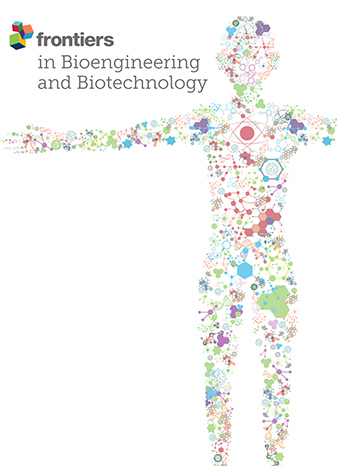An ultra-sensitive suboptimal protospacer adjacent motif enhanced rolling circle amplification assay based on CRISPR/Cas12a for detection of miR-183
IF 4.3
3区 工程技术
Q1 BIOTECHNOLOGY & APPLIED MICROBIOLOGY
引用次数: 0
Abstract
IntroductionMicroRNAs (miRNAs) have been recognized as promising diagnostic biomarkers for Diabetic Retinopathy (DR) due to their notable upregulation in individuals with the condition. However, the development of highly sensitive miRNAs assays for the rapid diagnosis of DR in clinical settings remains a challenging task.MethodsIn this study, we introduce an enhanced CRISPR/Cas12a assay, leveraging suboptimal PAM (sPAM)-mediated Cas12a trans-cleavage in conjunction with rolling circle amplification (RCA). sPAM was found to perform better than canonical PAM (cPAM) in the detection of Cas12a-mediated ssDNA detection at low concentrations and was used instead of canonical PAM (cPAM) to mediate the detection. The parameters of reactions have also been optimized.Results and discussionIn comparison with cPAM, sPAM has higher sensitivity in the detection of ssDNA at concentrations lower than 10 pM by Cas12a. By replacing cPAM with sPAM in the padlock template of RCA, ultra-high sensitivity for miR-183 detection is achieved, with a detection limit of 0.40 aM. within 25 min and a linear range spanning from 1 aM. to 1 pM. Our assay also exhibits exceptional specificity in detecting miR-183 from other miRNAs. Furthermore, the applicability of our assay for the sensitive detection of miR-183 in clinical serum samples is also validated. This study introduces a groundbreaking assay with excellent performance through a simple modification, which not only addresses existing diagnostic challenges, but also opens exciting new avenues for clinical diagnosis in the realm of DR.基于 CRISPR/Cas12a 的用于检测 miR-183 的超灵敏次优原位相邻基序增强滚动圈扩增分析法
导言由于微小RNA(miRNA)在糖尿病视网膜病变(DR)患者体内显著上调,它们已被认为是有希望的DR诊断生物标志物。方法在这项研究中,我们利用次优 PAM(sPAM)介导的 Cas12a 转裂解与滚动圈扩增(RCA)相结合,引入了一种增强型 CRISPR/Cas12a 检测方法。研究发现,在低浓度下检测 Cas12a 介导的 ssDNA 时,sPAM 的性能优于典型 PAM(cPAM),因此用它代替典型 PAM(cPAM)来介导检测。结果与讨论与 cPAM 相比,sPAM 在 Cas12a 介导的浓度低于 10 pM 的 ssDNA 检测中具有更高的灵敏度。通过在 RCA 的挂锁模板中用 sPAM 替代 cPAM,实现了 miR-183 的超高灵敏度检测,25 分钟内的检测限为 0.40 aM,线性范围从 1 aM 到 1 pM。我们的检测方法在检测 miR-183 和其他 miRNA 时也表现出了极高的特异性。此外,我们的检测方法在临床血清样本中灵敏检测 miR-183 的适用性也得到了验证。这项研究通过简单的改良,推出了一种性能卓越的开创性检测方法,不仅解决了现有的诊断难题,还为 DR 领域的临床诊断开辟了令人兴奋的新途径。
本文章由计算机程序翻译,如有差异,请以英文原文为准。
求助全文
约1分钟内获得全文
求助全文
来源期刊

Frontiers in Bioengineering and Biotechnology
Chemical Engineering-Bioengineering
CiteScore
8.30
自引率
5.30%
发文量
2270
审稿时长
12 weeks
期刊介绍:
The translation of new discoveries in medicine to clinical routine has never been easy. During the second half of the last century, thanks to the progress in chemistry, biochemistry and pharmacology, we have seen the development and the application of a large number of drugs and devices aimed at the treatment of symptoms, blocking unwanted pathways and, in the case of infectious diseases, fighting the micro-organisms responsible. However, we are facing, today, a dramatic change in the therapeutic approach to pathologies and diseases. Indeed, the challenge of the present and the next decade is to fully restore the physiological status of the diseased organism and to completely regenerate tissue and organs when they are so seriously affected that treatments cannot be limited to the repression of symptoms or to the repair of damage. This is being made possible thanks to the major developments made in basic cell and molecular biology, including stem cell science, growth factor delivery, gene isolation and transfection, the advances in bioengineering and nanotechnology, including development of new biomaterials, biofabrication technologies and use of bioreactors, and the big improvements in diagnostic tools and imaging of cells, tissues and organs.
In today`s world, an enhancement of communication between multidisciplinary experts, together with the promotion of joint projects and close collaborations among scientists, engineers, industry people, regulatory agencies and physicians are absolute requirements for the success of any attempt to develop and clinically apply a new biological therapy or an innovative device involving the collective use of biomaterials, cells and/or bioactive molecules. “Frontiers in Bioengineering and Biotechnology” aspires to be a forum for all people involved in the process by bridging the gap too often existing between a discovery in the basic sciences and its clinical application.
文献相关原料
| 公司名称 | 产品信息 | 采购帮参考价格 |
|---|
 求助内容:
求助内容: 应助结果提醒方式:
应助结果提醒方式:


